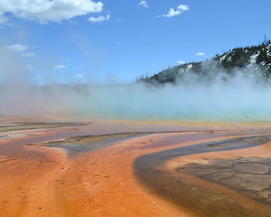How Does the Continental Crust Get Really Hot?
There is widespread evidence that ultrahigh temperatures of 900–1000 °C have been generated in the Earth’s crust repeatedly in time and space. These temperatures were associated with thickened crust in collisional mountain belts and the production of large volumes of magma. Numerical modelling indicates that a long-lived mountain plateau with high internal concentrations of heat-producing elements and low erosion rates is the most likely setting for such extreme conditions. Preferential thickening of alreadyhot back-arc basins and mechanical heating by deformation in ductile shear zones might also contribute to elevated temperatures.
How Does the Continental Crust Get Really Hot? Read More »


